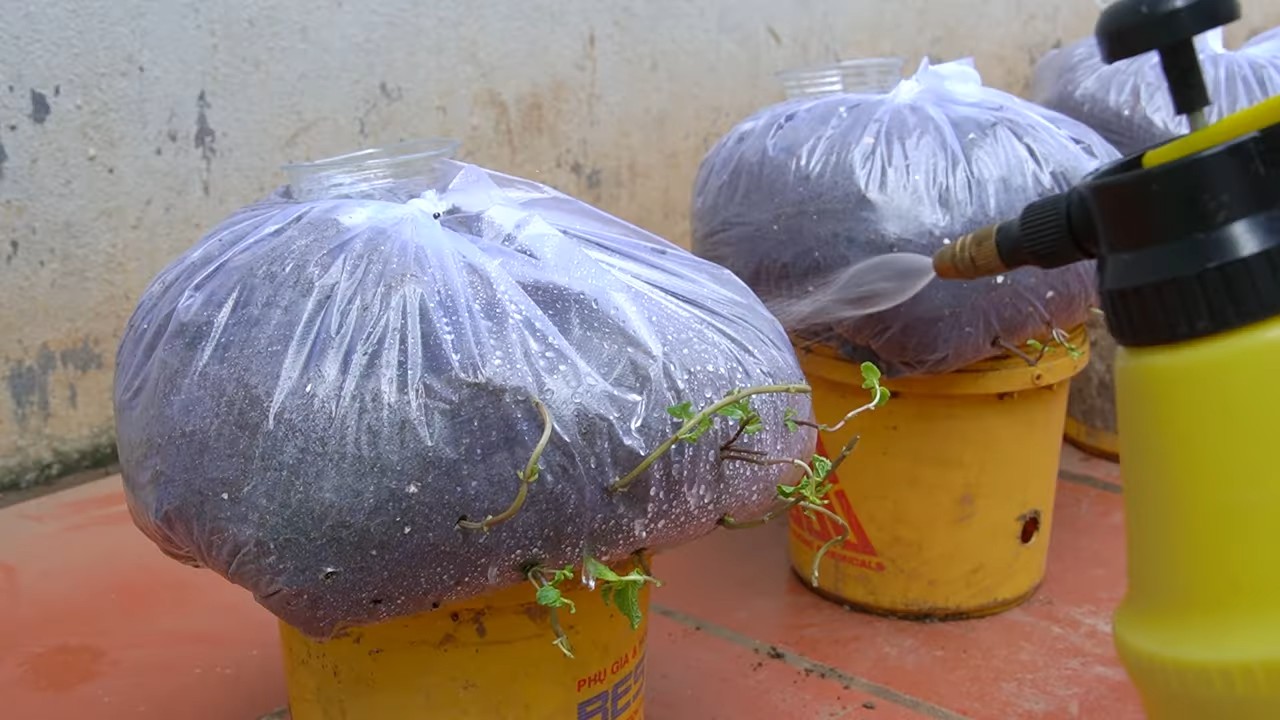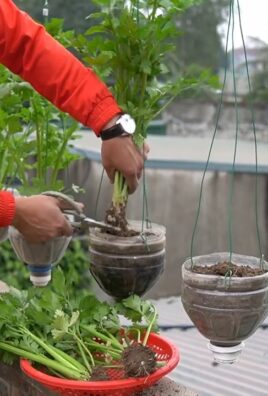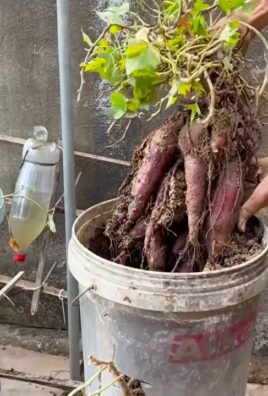Peppermint plant care tips are essential for anyone dreaming of a thriving, fragrant garden bursting with fresh, minty goodness! Have you ever imagined stepping outside your door and snipping a few sprigs of peppermint for a refreshing tea, a zesty cocktail, or even a homemade breath freshener? Well, stop dreaming and start doing! This article is your ultimate guide to unlocking the secrets of successful peppermint cultivation, even if you’re a complete beginner.
Peppermint, a hybrid of watermint and spearmint, boasts a rich history dating back to ancient Egypt, where it was used for medicinal purposes. Its invigorating aroma and versatile uses have made it a beloved herb across cultures for centuries. But let’s be honest, sometimes growing peppermint can feel like a battle. It can be invasive, taking over your garden if you’re not careful, and sometimes it just doesn’t seem to thrive, leaving you with sad, sparse leaves instead of the lush growth you envisioned.
That’s where these DIY tricks and hacks come in! I’m going to share my tried-and-true methods for keeping your peppermint happy, healthy, and contained. Whether you’re dealing with limited space, struggling with pests, or simply want to maximize your peppermint yield, these peppermint plant care tips will empower you to create a flourishing peppermint patch that you can enjoy all season long. So, grab your gardening gloves, and let’s get started!

Properly Caring for Peppermint: Your DIY Guide for a Lush Mint Garden
Hello dear garden friends! I am totally thrilled with peppermint. Its fresh scent, the invigorating taste – simply wonderful! And the best part: it’s super easy to care for if you follow a few basic things. In this article, I’ll show you how to make your peppermint shine, whether in the garden, on the balcony, or in your home. Let’s go!
The Basics: What Peppermint Really Needs
Before we go into detail, let’s briefly clarify the most important needs of peppermint. This will ensure that it feels completely comfortable with you:
- Sun: Peppermint loves the sun, but a partially shaded location is also fine. The more sun, the more intense the aroma.
- Soil: A loose, nutrient-rich, and well-draining soil is ideal. It does not like waterlogging at all!
- Water: Water regularly, but don’t drown it! The soil should always be slightly moist.
- Fertilizer: During the growing season (spring and summer), peppermint enjoys an occasional dose of fertilizer.
- Space: Peppermint is a spreader! If you plant it in the garden, you should definitely put it in a pot or a root barrier to prevent it from spreading uncontrollably.
Planting Peppermint in a Pot: Step by Step
Planting peppermint in a pot is really child’s play. Here I’ll show you how it’s done:
- Choose the right pot: Select a pot with sufficient drainage holes. A diameter of at least 20 cm is ideal.
- Use high-quality soil: Fill the pot with high-quality herb soil or a mixture of garden soil, compost, and sand.
- Plant the peppermint: Carefully place the peppermint in the pot and fill the remaining space with soil. Make sure the root ball is completely covered.
- Water in: Water the peppermint thoroughly after planting.
- Find the right location: Place the pot in a sunny or partially shaded location.
Planting Peppermint in the Garden: How to Avoid an Invasion
Planting peppermint in the garden is a bit trickier, as it can spread quickly. But with these tips, you’ll stay in control:
- Install a root barrier: Dig a large hole and insert a large pot without a bottom or a special root barrier. The edge of the barrier should protrude a few centimeters from the ground.
- Plant the peppermint: Place the peppermint in the pot or root barrier and fill the remaining space with soil.
- Water in: Water the peppermint thoroughly after planting.
- Check regularly: Regularly check if the peppermint is trying to grow under the root barrier. If so, remove the runners immediately.
The Right Care: Watering, Fertilizing, Pruning
Proper care is crucial for a healthy and lush peppermint. Here are my best tips:
- Watering correctly: Water the peppermint regularly, especially during the hot summer months. The soil should always be slightly moist, but not wet. Avoid waterlogging! It’s best to test with your finger to see if the soil is still moist enough.
- Fertilizing correctly: During the growing season (spring and summer), you can fertilize the peppermint every few weeks with an organic herb fertilizer. I like to use diluted nettle tea – it’s a natural fertilizer that provides the peppermint with all the important nutrients.
- Pruning correctly: Regular pruning promotes growth and prevents the peppermint from flowering. Flowering peppermint loses its aroma. Simply cut the shoots with scissors or a knife. You can use the cut shoots for cooking, for tea, or for drying.
- Overwintering: Peppermint is hardy, but in a pot, it is somewhat more sensitive to frost. Place the pot in a sheltered location, e.g., against a house wall or in a garage. Water the peppermint sparingly during the winter. In the spring, when the temperatures rise again, you can move it back to its original location.
Propagating Peppermint: How to Get Even More Mint
Peppermint is very easy to propagate. Here are two methods I like to use:
Propagation by Cuttings
- Cut cuttings: In spring or summer, cut 10-15 cm long cuttings from healthy shoots. Remove the lower leaves.
- Root cuttings: Place the cuttings in a glass of water. Change the water regularly. After a few weeks, roots will form.
- Plant cuttings: Once the roots are about 2-3 cm long, you can plant the cuttings in pots with soil.
Propagation by Division
- Divide the plant: In spring or autumn, dig up the peppermint plant.
- Divide the root ball: Carefully divide the root ball into several parts with a knife or scissors. Make sure each part has enough roots and shoots.
- Plant the parts: Plant the individual parts in pots or in the garden bed.
Common Problems and Solutions
Problems can also occur when caring for peppermint. Here are some of the most common problems and how you can solve them:
- Yellow leaves: Yellow leaves can be a sign of overwatering or nutrient deficiency. Check the watering and fertilize the peppermint if necessary.
- Brown leaves: Brown leaves can be a sign of drought or sunburn. Water the peppermint regularly and move it to a shadier location if necessary.
- Pests: Peppermint can be infested by aphids, spider mites, or slugs. Combat the pests with natural remedies, e.g., with a brew of nettles or garlic.
- Fungal diseases: In damp weather, peppermint can be affected by fungal diseases. Ensure good ventilation and remove affected leaves.
Harvesting and Using Peppermint: Tips and Tricks
You can harvest peppermint all year round. However, it tastes best just before flowering. Simply cut the shoots with scissors or a knife.
Here are a few ideas on how you can use your peppermint:
Drying: Dry peppermint to preserve it for tea or other purposes. Tie the shoots into small bouquets and hang them in an airy, shady place.auf.
Fresh tea: Pour hot water over fresh peppermint leaves and let the tea steep for a few minutes.
Aromatic water: Add a few peppermint leaves to a carafe of water and let the water infuse for a few hours.
Cocktails: Peppermint is a great ingredient for cocktails like Mojito or Mint Julep.
Desserts: Peppermint goes wonderfully with chocolate, ice cream, or fruit salad.
Savory dishes: Peppermint can also be used in savory dishes, e.g., in salads, sauces, or with lamb.

Conclusion
So, there you have it! Mastering peppermint plant care isn’t some mystical art reserved for seasoned gardeners. It’s a surprisingly straightforward process that yields incredible rewards – a thriving, fragrant plant ready to infuse your life with its refreshing essence. From teas and culinary creations to natural pest control and aromatherapy, the possibilities are truly endless.
Why is this DIY approach a must-try? Because it empowers you to cultivate your own source of fresh, organic peppermint, free from the chemicals and pesticides often found in commercially grown herbs. You’ll not only save money but also gain a deeper connection to the natural world, experiencing the satisfaction of nurturing a plant from seedling to harvest. Plus, the sheer joy of snipping off a few leaves to brew a soothing cup of peppermint tea, knowing you grew it yourself, is simply unmatched.
Don’t be afraid to experiment! Peppermint is a resilient plant, and there are plenty of variations you can explore. Try different soil mixes to see what works best in your climate. Consider growing your peppermint in containers of varying sizes to control its spread. And definitely explore different varieties of peppermint – chocolate peppermint, lemon peppermint, and orange peppermint all offer unique flavor profiles and aromas. You can even try propagating your peppermint to create even more plants!
We wholeheartedly encourage you to give these peppermint plant care tips a try. Start small, be patient, and don’t be discouraged by initial setbacks. Gardening is a learning process, and every mistake is an opportunity to grow (pun intended!). The reward of having a flourishing peppermint plant at your fingertips is well worth the effort.
And most importantly, we want to hear about your experiences! Share your successes, your challenges, and your creative uses for your homegrown peppermint in the comments below. Let’s build a community of peppermint enthusiasts, sharing tips and inspiring each other to cultivate our own little green havens. Happy growing!
Frequently Asked Questions (FAQ)
Q: How often should I water my peppermint plant?
A: Watering frequency depends on several factors, including the size of your pot, the type of soil, and the climate. Generally, you should water your peppermint plant when the top inch of soil feels dry to the touch. Avoid overwatering, as this can lead to root rot. A good rule of thumb is to water deeply but infrequently, allowing the soil to dry out slightly between waterings. During hotter months, you may need to water more frequently. Check the soil moisture regularly to ensure your plant is getting the right amount of water. If the leaves start to wilt or droop, it’s a sign that your plant needs more water. Conversely, if the leaves turn yellow or brown, it could be a sign of overwatering.
Q: My peppermint plant is spreading like crazy! How can I control it?
A: Peppermint is known for its vigorous growth and spreading habit. If you’re growing it in the ground, it can quickly take over your garden. The best way to control its spread is to grow it in containers. This will confine the roots and prevent them from spreading. You can also use root barriers if you’re planting it in the ground. These barriers are typically made of plastic or metal and are buried around the plant to prevent the roots from spreading. Another option is to regularly prune your peppermint plant to keep it in check. This will also encourage bushier growth. If you notice any runners (stems that grow horizontally along the ground), cut them off immediately to prevent them from rooting.
Q: What kind of soil is best for peppermint?
A: Peppermint thrives in well-draining soil that is rich in organic matter. A good soil mix for peppermint would include equal parts of potting soil, compost, and perlite or vermiculite. The potting soil provides a base for the plant to grow in, the compost adds nutrients and improves drainage, and the perlite or vermiculite helps to aerate the soil and prevent it from becoming compacted. Avoid using heavy clay soil, as this can retain too much water and lead to root rot. If you have clay soil, amend it with plenty of organic matter, such as compost or aged manure, to improve its drainage. The ideal pH for peppermint is between 6.0 and 7.0.
Q: How much sunlight does peppermint need?
A: Peppermint prefers full sun to partial shade. Ideally, it should receive at least 6 hours of sunlight per day. However, it can tolerate some shade, especially during the hottest part of the day. If you’re growing your peppermint indoors, place it near a sunny window where it will receive plenty of light. If you don’t have a sunny window, you can supplement with artificial light, such as a grow light. Insufficient sunlight can lead to leggy growth and reduced flavor. If your peppermint plant is not getting enough sunlight, the stems will become long and thin, and the leaves will be pale and less fragrant.
Q: Can I grow peppermint indoors?
A: Yes, you can definitely grow peppermint indoors! In fact, growing peppermint indoors is a great way to have fresh herbs year-round. To grow peppermint indoors successfully, make sure to provide it with plenty of sunlight, well-draining soil, and regular watering. Choose a pot that is at least 6 inches in diameter to give the roots plenty of room to grow. Place the pot near a sunny window where it will receive at least 6 hours of sunlight per day. If you don’t have a sunny window, you can use a grow light. Water the plant when the top inch of soil feels dry to the touch. Fertilize the plant every few weeks with a balanced liquid fertilizer. And don’t forget to prune your peppermint plant regularly to encourage bushier growth.
Q: What are some common pests and diseases that affect peppermint?
A: While relatively pest-resistant, peppermint can be susceptible to a few common pests and diseases. Aphids, spider mites, and whiteflies are common pests that can infest peppermint plants. These pests suck the sap from the leaves, causing them to become yellow and distorted. You can control these pests by spraying the plant with insecticidal soap or neem oil. Root rot is a common disease that can affect peppermint plants, especially if they are overwatered. To prevent root rot, make sure to plant your peppermint in well-draining soil and avoid overwatering. Other diseases that can affect peppermint include powdery mildew and rust. These diseases can be treated with fungicides. Regularly inspect your peppermint plant for signs of pests and diseases, and take action promptly to prevent them from spreading.
Q: How do I harvest peppermint?
A: Harvesting peppermint is easy! Simply snip off the stems with scissors or pruning shears. You can harvest peppermint throughout the growing season, whenever you need fresh leaves. For the best flavor, harvest peppermint in the morning, after the dew has dried. You can use the fresh leaves immediately, or you can dry them for later use. To dry peppermint, tie the stems together in small bundles and hang them upside down in a cool, dry place. Once the leaves are completely dry, you can crumble them and store them in an airtight container. Regular harvesting will encourage bushier growth and prevent the plant from becoming leggy.
Q: Can I propagate peppermint from cuttings?
A: Yes, propagating peppermint from cuttings is a simple and effective way to create new plants. Take a cutting that is about 4-6 inches long from a healthy stem. Remove the leaves from the bottom inch of the cutting. Place the cutting in a glass of water, making sure that the bottom inch is submerged. Place the glass in a bright, indirect light. Change the water every few days. After a few weeks, the cutting should develop roots. Once the roots are about an inch long, you can plant the cutting in a pot filled with well-draining soil. Water the plant regularly and keep it in a bright, indirect light. After a few weeks, the plant should start to grow.




Leave a Comment